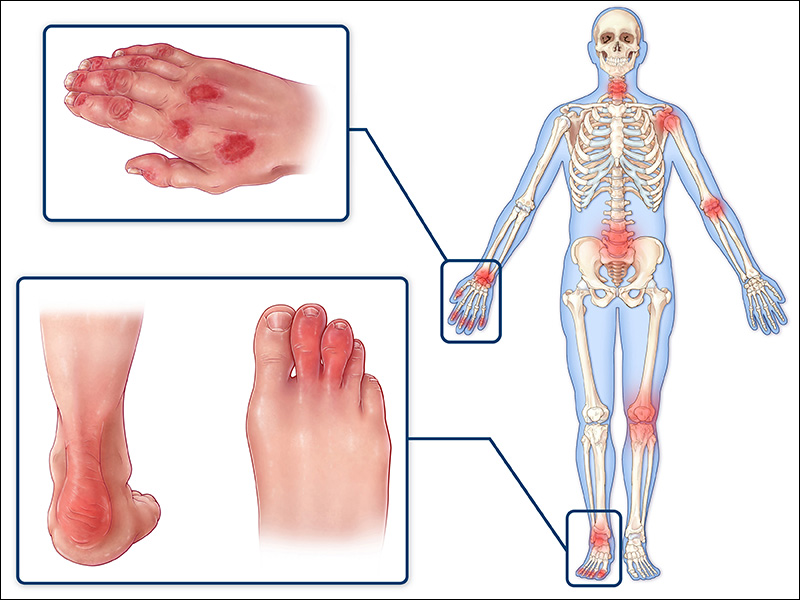The Basics of Psoriatic Arthritis

Psoriatic arthritis is a prolonged (long-lasting) disease in which a person suffering from psoriasis acquires the signs and symptoms of arthritis joint pain, stiffness and swelling. Psoriasis is a common, congenital skin disorder that produces greyish-white scaling over a pink or dull-red skin rash.
According to a survey report 5% to 10% of the 3 million people suffering from psoriasis expound psoriatic arthritis. Both men and women are equally affected by Psoriatic arthritis. Generally, the disorder begins between ages 30 and 50. However, children can also suffer from this disease. Usually the symptoms of Psoriatic arthritis are mild but still in some cases the symptoms can be quite stern.
Types of Psoriatic Arthritis
There are five types of psoriatic arthritis.
Asymmetric inflammatory arthritis – Frequently the knee, ankle, wrist or finger are involved, with an aggregate of one to four inflamed joints. In this kind of arthritis both the sides of body are not equally affected.
Symmetric arthritis – Many joints are inflamed, more than four, and in this kind of arthritis both the sides of body are equally affected. Fingernails often are ribbed and potholed. This disorder can mimic rheumatoid arthritis.
Psoriatic spondylitis – the joints linking the spine and pelvis at the lower back, and sometimes other spine joints, are inflamed, which cause morning stiffness and back pain.
Isolated finger involvement – This only involves the last finger joint adjoining the nail. More than one joint is inflamed.
Arthritis mutilans – This is the most severe and oddest kind of psoriatic arthritis. Due to the destruction of the joints and nearby bones, the fingers get shorten.
Symptoms
Symptoms of psoriatic arthritis include:
- A pink or dull-red, flaky skin rash occurring in patches, mostly on the back of the arms, front of the legs and scalp
- Inflammation the fingers, toes or spine
- Morning joint toughness
- Lower back ache
Apart from arms and legs psoriatic arthritis can affect other parts of the body also. For instance, people with active psoriatic arthritis can face the problem like fatigue and anaemia. Normally, in arthritis person gets inflammation of tendons and the spots where tendons attach to bones, including the heel or fingers.
Treatment
The basic and commonly used treatment of psoriatic arthritis is to take nonsteroidal anti-inflammatory drugs (NSAIDs), like aspirin, ibuprofen or naproxen. Corticosteroids like prednisone, taken by mouth, is used occasionally, as you may feel some side effects if you are continuing it for a longer time period. If the joints are inflamed severely, infrequent injections of a steroid can be taken.
